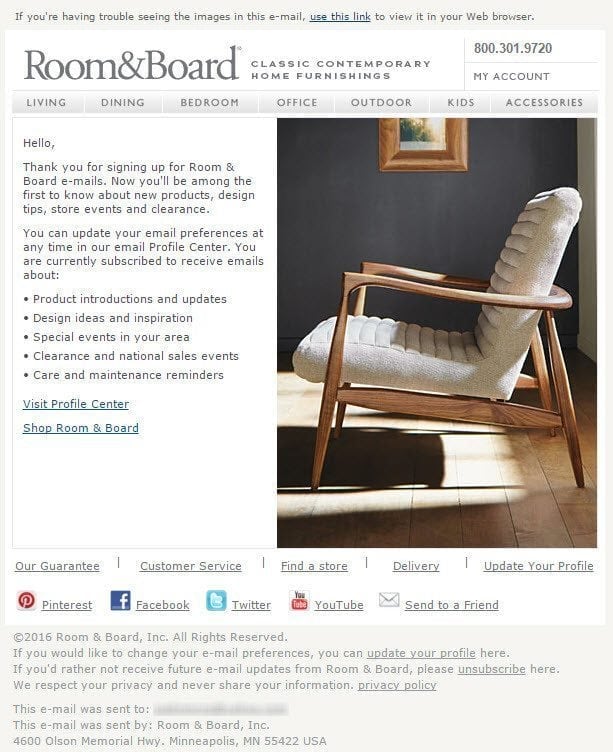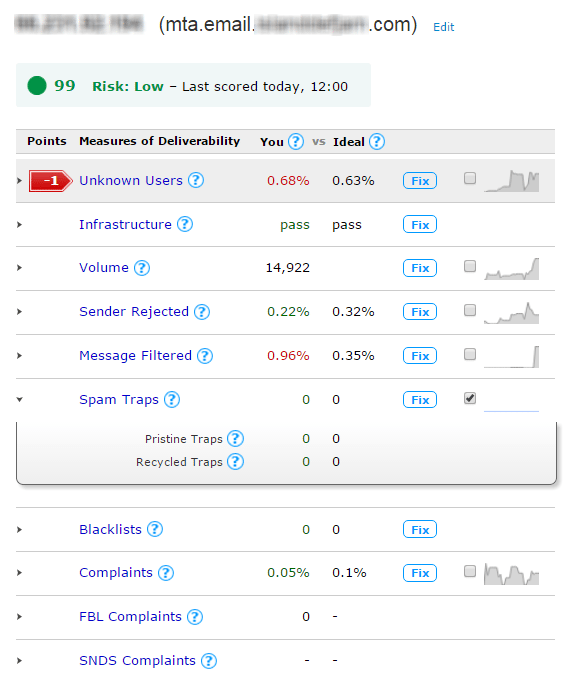
A long time ago, in a galaxy far, far away, a wise admiral once exclaimed, “It’s a trap!” While Admiral Ackbar may have been discussing the Death Star instead of spam traps, the negative impact of spam traps on a sender’s reputation is just as serious. Whether the traps are pristine or recycled, their presence on an email list can lead to numerous deliverability issues such as mail being bulked or even blocked altogether.
Pristine spam traps are email addresses created by either a mailbox provider or a blacklist with the goal of preventing malicious mail. Pristine traps are hidden throughout the internet and are almost always acquired by a bot “scraping” websites looking for email addresses. The presence of pristine spam traps on an email list indicates questionable address acquisition methods. Repeatedly sending to a pristine spam trap causes the sender’s IP reputation to drop and as a result, mail may be blocked.
Recycled spam traps, while less impactful than pristine spam traps, can still cause severe damage to sender reputation and inbox placement. A recycled spam trap is an email address that an individual has abandoned (think of that super cool first email address you created!) and the mailbox provider has retaken control of the address to use as a trap. Recycled spam traps on an email list point to questionable list hygiene practices.
While weeding out a few spam traps from a subscriber list may seem like a monumental task, it’s not an impossible feat. Here are a few ways that you can rise above spam traps by both avoidance and removal.
Keep subscriber lists clean
Do not rent or purchase lists from third parties: If the list source is unknown or murky, the list is not safe to mail. Purchased and rented lists often have a higher rate of spam traps. In addition, mailing to individuals who have not given express consent to receive your mailings increases chances of complaints, leading to reputation degradation and decreased inbox placement.
Implement confirmed opt-in for new subscribers: Also known as double opt-in, this method asks the new subscriber to confirm their address is correct by clicking through an initial email. This click action assists in ensuring that the email address is valid, active, and the subscriber wants to receive your mail.
Reject malformed email addresses during subscription: During address submission, sometimes subscribers will make a typo or not wish to disclose their real email address. These malformed email addresses should not be sent mail as they can lead to increased bounces and potentially spam traps. Confirmed opt-in is an excellent way to avoid incorrect or invalid email addresses, as those bad addresses will never be able to confirm and add themselves to the subscriber list.
Send a welcome series/confirmation message: Sending a welcome/confirmation message as soon as possible after initial subscription benefits both sender and subscriber. As the sender, if the welcome message bounces the email address is invalid and can be removed from the subscriber list. As the recipient, the welcome email reiterates the benefits of the subscription and sets expectations for mailing topics and cadence.
Spread the word
Share your suppression list company-wide: If multiple individuals or business units utilize email marketing, share your suppression list company-wide. This ensures no one mistakenly mails to a bounced address or to subscribers who have unsubscribed or complained.
Don’t be afraid to say goodbye
Only send to subscribers who positively engage with your mail: While sending great content is extremely important, it’s also important to send to great subscribers. There are many reasons why a subscriber stops interacting with mail—one of them may be the email address was abandoned. As discussed earlier, these abandoned addresses can be taken over by mailbox providers like Gmail and used as a recycled spam trap. Continuing to mail to a recycled spam trap negatively impacts reputation and inbox placement. Create engagement rules so subscribers who do not engage for a set period of time are no longer mailed to, or are mailed at a less frequent cadence. Does suppressing unengaged subscribers shrink the list? Yes, but think quality instead of quantity.
Make it easy to unsubscribe: It’s never easy to see a subscriber leave, but a dead simple unsubscribe process is crucial for minimizing spam traps. If a subscriber finds it too difficult to unsubscribe, they may complain about your mail or just allow the mail to be delivered and never engage. If the subscriber then abandons that address, it may be converted to a recycled spam trap by the mailbox provider. As a best practice, do not require the subscriber to input their email address to unsubscribe, as this can cause more complaints.
Offer multiple ways to unsubscribe such as:
- Allowing the subscriber to reply to an email with “unsubscribe” as the subject line or body
- Creating a highly-visible unsubscribe link both at the top and bottom of emails
- Allowing subscribers to unsubscribe from their account or profile on your website
Use these tools to combat spam traps:
Return Path Reputation Monitor—Return Path’s Email Intelligence Suite contains a robust toolset, including Reputation Monitor. Reputation Monitor reports on a variety of deliverability measures contributing to a sender’s IP reputation. It offers insight on both recycled and pristine spam traps including the type of trap mailed, date mailed, and how many traps were hit. Reputation Monitor can be used to strategically segment and monitor mailings to aid in weeding out spam traps.
Windows Live Hotmail SNDS (Smart Network Data Services)—SNDS is a free service provided by Microsoft that allows senders to monitor recycled spam traps at Windows Live Hotmail/Outlook.com and the approximate time frames those traps were hit.
Return Path Certification—Senders certified through Return Path’s certification whitelist program have insight into detailed complaint, unknown user, and spam trap data from multiple sources around the globe. Senders can use this data to identify spam trap hits and work to remove them from subscriber lists.
While Admiral Ackbar did end up falling into a trap, he was able to survive and ultimately accomplish his goal. Spam traps can have far-reaching negative consequences, but they too can be survived and do not have to prevent you from reaching your email marketing goals.



